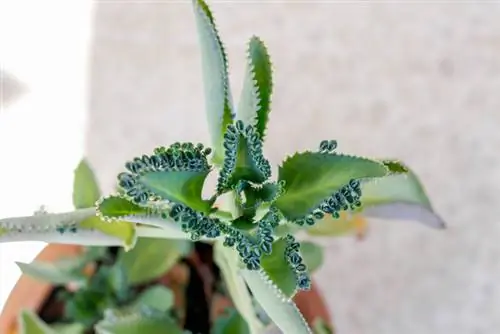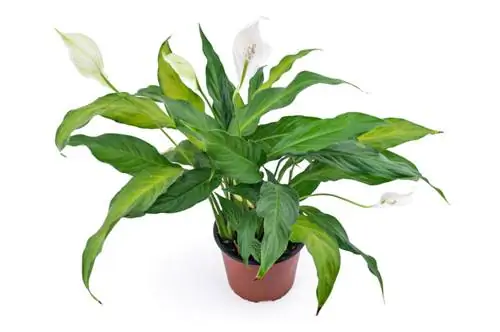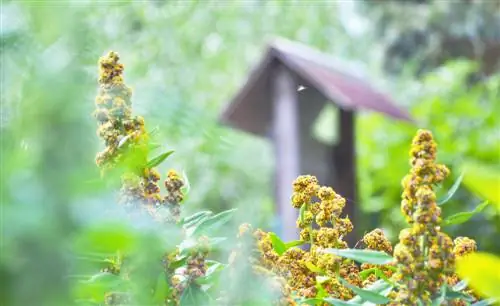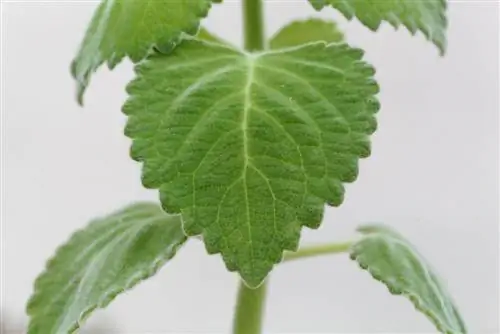- Author admin [email protected].
- Public 2023-12-16 16:46.
- Last modified 2025-01-23 11:21.
The brood leaf impresses with its enormous regenerative ability. A piece of a leaf is enough to propagate the plant. However, it also forms a large number of offshoots on the edge of the leaf, which fall down after a while and simply continue to grow. The Kalanchoe Pinnata, also known as the Goethe plant, is also extremely easy to care for if you follow a few important tips.

How do you care for the Kalanchoe Pinnata?
Caring for the Kalanchoe Pinnata includes sparing watering when the soil is dry, fertilizing every four weeks during the growing season, repotting every two to three years in spring, light pruning if necessary and overwintering at room temperature. Also keep an eye out for possible pests and diseases.
How to water?
The succulent plant is able to store liquid in its leaves and use this supply to sustain itself for a while. On the other hand, it reacts very sensitively to waterlogging. That's why you only water when the soil is largely dry. Then pour thoroughly and throw away any water that collects in the saucer after a few minutes.
How to fertilize?
Fertilize every four weeks during the growing season from October to March. A commercially available liquid fertilizer (€14.00 on Amazon), like the one you use for other houseplants, is suitable.
When will we repot?
The Kalanchoe Pinnata does not develop a very large root system, so repotting is only necessary every two to three years. The ideal time for this care measure is spring.
How to cut?
Kalanchoes only need to be cut back if they grow unsightly. You can then:
- Short the shoots in the top third to give the plant a more attractive shape.
- Unsightly shoots that no longer have leaves in the lower area should be cut back to just above the ground.
When Kalanchoes bloom, the stem is only shortened when no fresh buds appear. Beforehand, only pinch out the withered parts of the plant.
How do you overwinter?
The brood leaf can be overwintered at room temperature. Alternatively, you can keep the plant cooler in the cold season, but the temperature should not fall below 15 degrees.
What pests and diseases are threatening?
The Kalanchoe Pinnata is very robust and is rarely attacked by vermin or diseases:
- Root rot: If watered too much, the roots die. The lifelines can then no longer absorb water and the plant dries up, even though it has been watered regularly. Pot the succulent into fresh substrate as quickly as possible; it will often recover.
- Mildew: This also occurs on houseplants. Remove affected leaves and dispose of them with household waste. If the infestation is severe, treat with a suitable fungicide.
- Aphids or mealybugs: Separate the plant and check other houseplants. The only solution here is treatment with a systemic insecticide or biological contact agent.
Tip
In many cultures, the Kalanchoe Pinnata is considered a highly effective medicinal plant. It is used successfully here for inflammation, ulcers and skin problems.






